Communication is essential. With your partner. With your kids. In life in general.
In the workspace, effective communication is critical. For example, 89% of people say communication is crucial at work.
No big shock there. It’s no secret communication is key.
But 80% of people also rate communication at their own company as average or poor.
Something is not lining up. How can we be so bad at something we all agree is important?
The answer might lie in whether or not we’re communicating effectively.
Not all communication is created equal. There’s plenty of effective communication out there … but there’s also a lot of terrible communication. A lot.
We fully endorse the notion that effective communication is possible for everyone. This article will break down what makes for effective communication in the workplace, detail the “5 Cs,” share some methods for fostering effective communication at work, and touch on how monday.com can help.
What is effective communication?
Effective communication is anything that accomplishes what you set out to communicate.
Some common qualities and skills contribute to communicating effectively — especially in the workplace — whether trying to ensure your team is on the same page about what tasks are due this week or explaining a complex product feature to a client.
What are some qualities of effective communication?
If you’ve ever taken a business communications course — or even if you’ve just done some Googling to figure out how to build up your communication skills — you might have come across the 5 Cs of communication.
There’s not a definitive list of the 5 Cs (and some lists have more or less than 5), but most share similar qualities of effective communication.
How important? 80% of employees report feeling stressed because of ineffective communication at work.
Here are some of the top qualities of good communication, the 5 C’s, off you will.:
- Clear: Don’t muddy the waters. It should be obvious what you are trying to convey and why.
- Concise: Short and sweet. Don’t use 100 words when 50 would suffice.
- Concrete: Be specific. What do you want to be done, how do you want it done, and when?
- Complete: Don’t leave anything out! Be sure you include everything necessary to understand your point.
- Courteous: Kindness wins, always. Use a polite, gentle tone in every situation.
Some lists will also include qualities like being coherent or correct — in other words, having understandable and accurate information.
When you implement the “5 Cs” of effective communication as a guide, you’ll create systems and patterns that improve your communication skills over time.You can’t translate these qualities into a checklist of repeatable action items. Instead, you’ll have to figure out how these qualities apply to each and every situation.
What are the most critical, effective communication skills?
When determining important communication skills, we often think about hard skills — writing, editing, social media, or even email management.
But for truly effective communication, the small (sometimes subtle) soft skills are often far more important.
In fact, 92% of hiring managers say soft skills are critical for good hires. For example, you can teach someone how to send an email, but it’s much harder to teach them to be polite.
Here are some of the most critical communication skills to develop:
- Active listening: Communication isn’t just talking. Active listening helps you understand what people are missing and how you can help them fill in the gaps.
- Stress and emotion management: If you’re a great communicator only in calm, stress-free times, you are not a great communicator. Knowing how to manage your emotions no matter what helps to be clear and courteous in any communication situation.
- Open-mindedness: Be open to new ideas and perspectives, and let them impact your work when it’s a good fit. This is especially important if you lead a team or manage projects.
- Confidence: A lack of confidence is often cited as a top reason for poor communication because people pick up on it even if they can’t quite name it. Being confident gives people a reason to trust you, so they’ll glean more of what you’re saying.
- Responsiveness: If you’re only saying what you want to say and not reacting to others, your credibility can crumble quickly. Be ready to alter your communication flow in real-time to convey your point most effectively.
These skills form the baseline for effective communication. Other skills, like knowing the right tools, are more easily put into a workflow or process to ensure everyone does them similarly.
But managing your stress and being open to new ideas is a lot more personal and something each team member will need to work on individually.
How can I foster effective communication at work?
Knowing the qualities and skills that lead to effective communication is one thing. But how can you get there if you don’t embody those already?
Or maybe you’re wondering how to help your entire team, department, or organization foster effective communication in the workplace.
Whatever your goal, following these tips and strategies will bring you closer to seeing those effective communication skills in action. Here are a few ways.
1. Get the right workplace communication tools.
Half a century ago, verbal communication was the best way to convey information effectively. OK, maybe written communication too (think: memos!) and some nonverbal cues for good measure.
Now? Collaboration software and other online tools make it so much easier to ensure you embody the principles of effective workplace communication.
Seriously: 71% of people who use an online tool like project management or collaboration software say it’s easy to see work status, but only 52% of people who use paper lists or email say the same.
Collaboration tools ensure that workplace communication is clear, concise, and complete. Tools that integrate communication into project management, tasks, or other operations through chat, comments, or integrations can be your best friend.
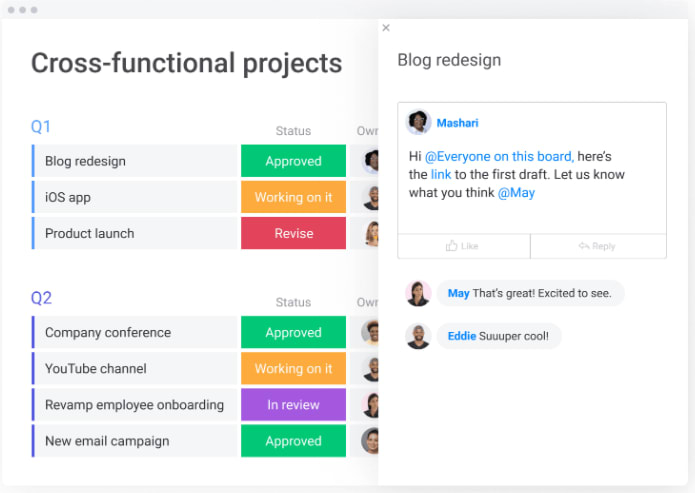
For example, a Work OS like monday.com integrates with Slack, Zoom, and other communication tools. Chats and comments can be turned into concrete workflows or actions, so nothing slips through the cracks.
Online platforms also provide a single source of truth for anyone involved with a project. Because of this capability, people who use online tools are 2 times as likely to say communication and efficiency are excellent.
2. Know your audience.
Not all good communication will look the same, even if it all has similar qualities.
A unique communication strategy depends on who you’re talking to. You may even need several different strategies in the workplace — one for coworkers, one for clients, and one for executives.
Case in point: Jargon can clutter communication if you’re talking to people who aren’t familiar with it (Ann Handley agrees).
Let’s say you are an IT whiz trying to explain a complicated computer concept to the CEO or a junior marketing assistant. You may need to use less jargon and more standard language to ensure your point comes across effectively.
However, chatting with an IT co-worker, it’s jargon time.
Knowing your audience is even more important when communicating with clients — 96% of people think businesses can improve their communications.
If you work with the same clients regularly, you probably already know how to communicate best with each one. For example, maybe a particular client prefers short, snappy bullet points, while another wants to have the full context of any topic. Note: It’s not all that different as a freelance writer.
In client-based work, a CRM like monday.com can help everyone on your team keep track of how to best communicate with clients.
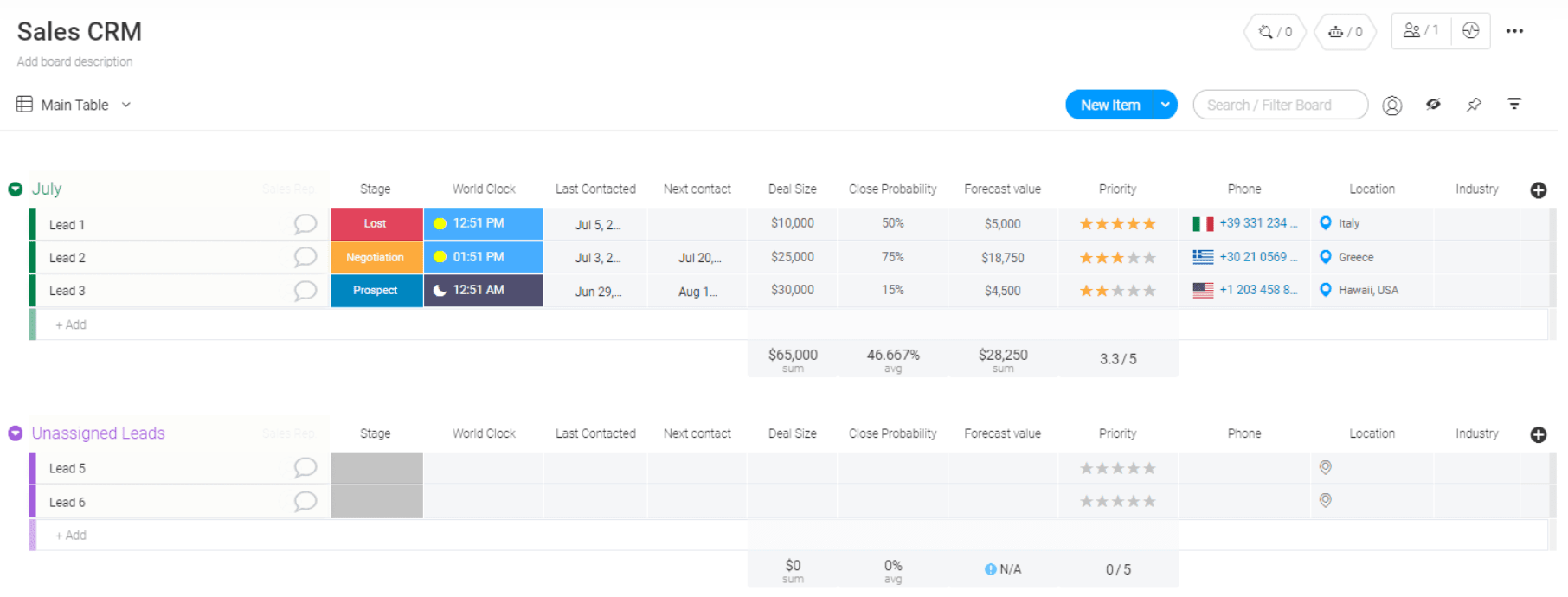
When in doubt, go back to basics. Think about the end goal of your communication, and err on being as clear, concise, and courteous as possible.
3. Encourage an open environment.
34% of workers say companies don’t value their ideas, even higher among junior workers.
To foster a workplace full of effective communication, everyone needs to feel their voice is being heard.The best way to encourage an open team environment where everyone feels comfortable sharing feedback, constructive criticism, and new ideas? Model the behavior you want to see.
Set the (good) example.
- Ask for and offer feedback — both good and bad — regularly.
- Host brainstorming sessions or town hall meetings where everyone can have their say.
- Ensure you listen and respond to the comments, ideas, and feedback. Think: active listening and responsiveness.
Another way to foster the kind of environment where good communication thrives is to be as transparent as possible with as much as possible. For example, share your thought process on key decisions, and give people access to project information.
A shared calendar or project management platform can go a long way toward helping your team feel like they are in an open environment where everyone clearly communicates about their work.
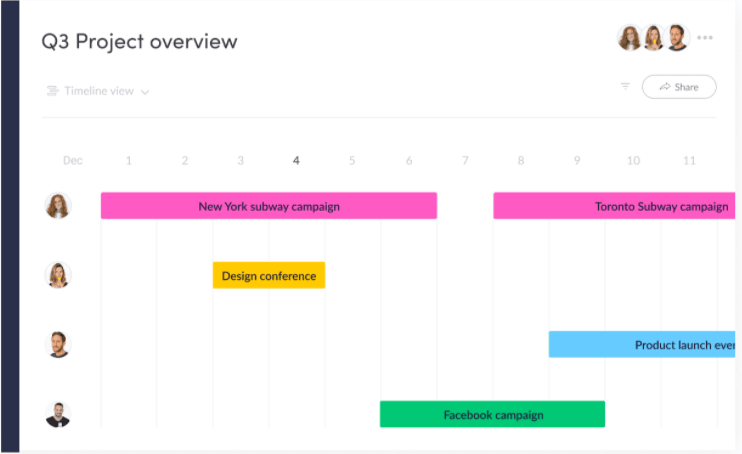
If you have a closed environment right now, it might take a while to see the rewards of an open and transparent workplace. But, eventually, team members will be comfortable asking questions or speaking up if something isn’t going right.
4. Don’t forget about non-verbal communication.
We’ve all received a text that just says “OK,” leaving us to wonder precisely what tone the sender meant.
Okay, they agree? Okay, they think it’s a terrible idea? Okay, mad? Okay, excited?
The lack of “Okay clarity” is because texting (and other forms of one-way, not-in-person communication) lacks non-verbal cues that help us understand the nuance of the sender’s meaning.
Non-verbal communication, which includes tone and body language, is a huge part of how we communicate. There are a dozen different guesses as to the exact percentage of communication that is non-verbal, but the point is: it’s a lot.
Because of this, communicating face-to-face is often most effective. We know — everyone hates meetings. But a good meeting can be far more effective than an email, especially when dealing with complex or challenging topics.
When face-to-face isn’t possible — because of distance, time constraints, or a global pandemic — phone or video calls are still better than email or IM.
Any nonverbal communication you can get across will go a long way toward effective communication.
Of course, plenty of meetings and conversations could have been an email. When you use written communication, being clear and concise becomes even more critical.
To help your written communication be more effective, use good formatting. For example, bullet points, subheadings, boldface, and more can all work as “nonverbal cues” in your writing.
5. Plan communication as much as possible.
Q: How often do you plan workplace communication?
A: Not often, for many.
Planning communication isn’t just about avoiding staff frustrations; it’s also about safety and the overall financial health of your company.
36% of employees said they have ended up in an unsafe situation due to poor communication, while 52% have witnessed poor financial outcomes, like lost sales.
With a bit of planning, avoiding these hazards in your business is possible.
Effective communication planning can range from having a high-level plan for all communications that need to go out to something as simple as writing a few key points for your next client call.
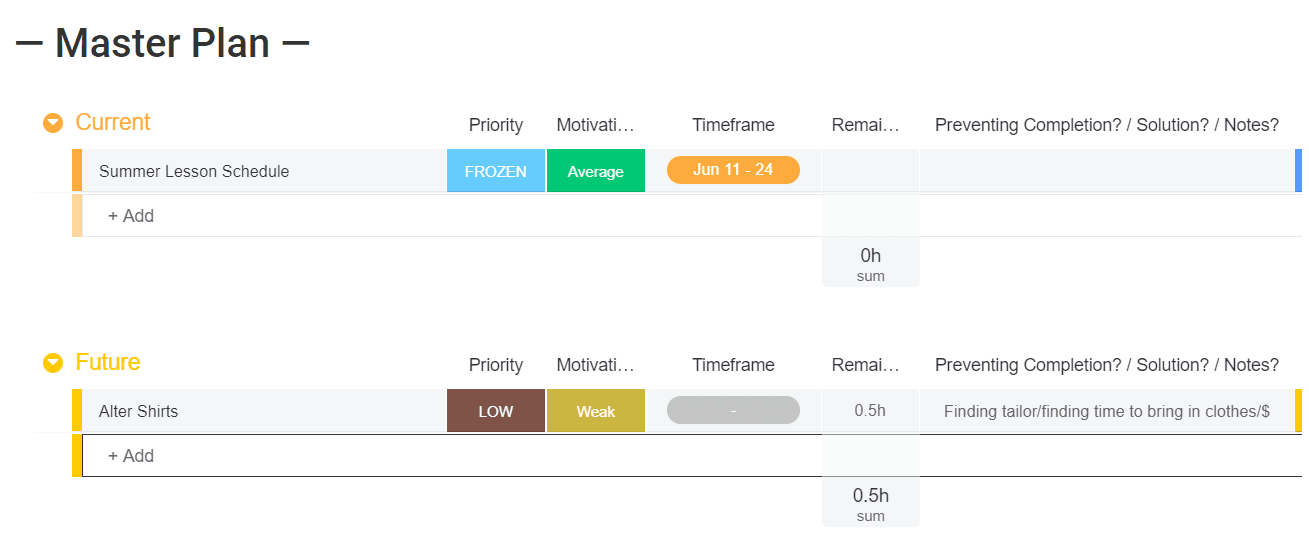
Planning and reviewing what you’re going to say helps you communicate more clearly and completely as you are less likely to forget things. You can say everything you mean exactly as you mean it.
How a platform like monday.com cultivates effective communication
The most effective communication is communication that gets everyone on the same page. Since monday.com is a single source of truth for all your business operations, it’s a platform with a significant impact on your team’s communication.
monday.com is a Work OS that encompasses everything from project and task management to CRM, sales, and software development. Because it’s in a single platform, it’s much easier to cultivate transparency across teams and departments.
Integrate Slack, Zoom, and other communication tools directly into your monday.com account — no switching between applications to find information. Chat messages can be turned into tasks and actions immediately, reducing the likelihood of anything falling through the cracks.
Automations help in so many ways with effective workplace communications. Set rules to ensure certain people are notified when tasks are completed. Keep tabs on project progress. And so much more.
These automations reduce errors surrounding who is assigned to what, along with understanding the next step of the project. So if you have an effective communication strategy, monday.com can help you automate parts of it to make it even more effective.
monday.com is flexible and adaptable for teams of any size, specialty, and location — even if you’re a remote team scattered across the world.
Any team can create custom apps and workflows that fit with their processes.
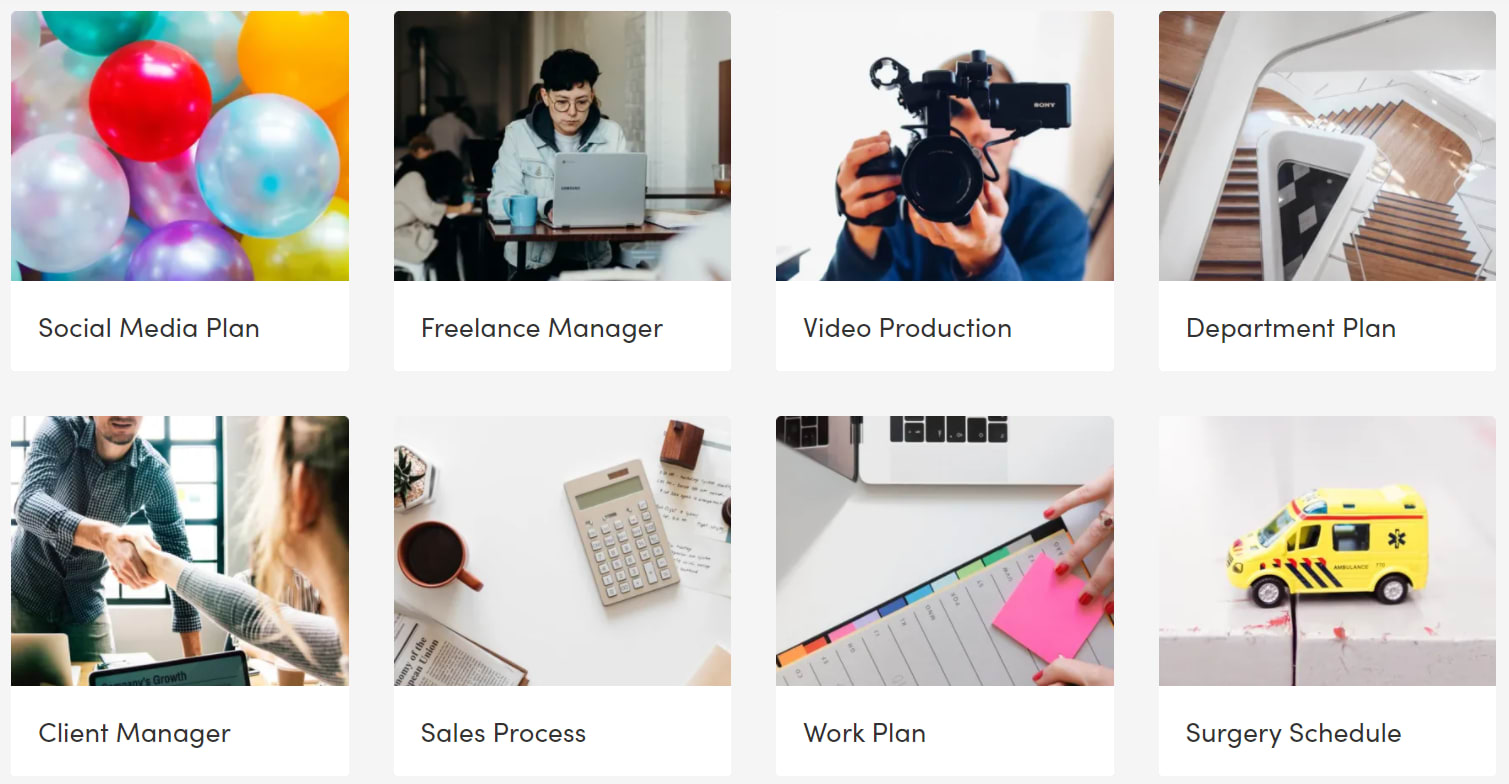
Our Workflow templates have options for everyone from the solo freelancer to the enterprise software development team — and every step along the way.
monday.com grows and scales along with you.
Because it works for any team, monday.com is a great way to get your entire business on the same page.
If you’re running complex projects involving multiple teams, there’s no need to juggle various communication or project management platforms too. Instead, everyone can create what they need in just one place.
Start communicating more effectively now.
Effective communication improves productivity and efficiency, which is critical to your bottom line. And it’s not all about finances either — employee morale and safety are also on the line.
A platform like monday.com can help you cultivate an environment where effective communication is the norm.
As a single source of truth for all your business operations, it can improve transparency, efficiency, and productivity — all with effective communication at its core.

